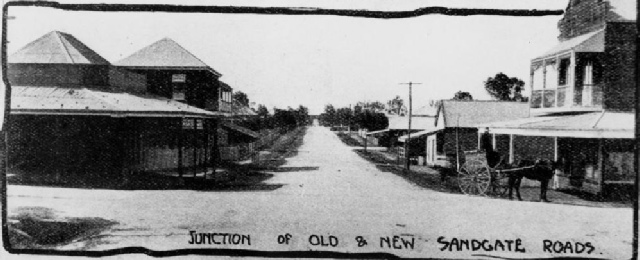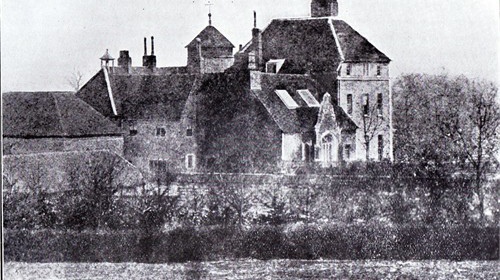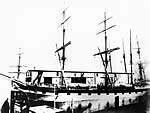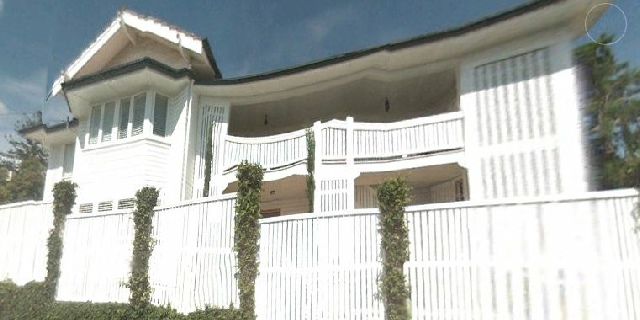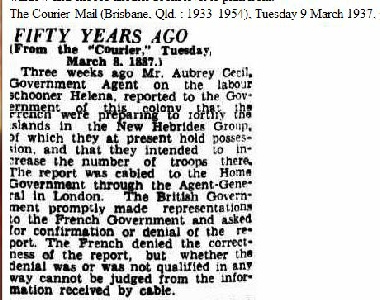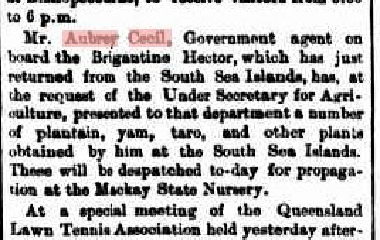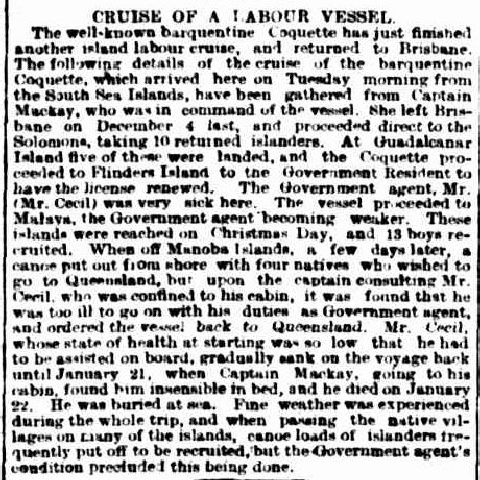Aubrey Cooper Cecil – born 10th March 1847 at Toddington Manor, Bedfordshire, England.
The story of Aubrey’s ancestry and childhood has already been told in ‘A Victorian Mésalliance, or, Goings on at the Manor’ written by Barbara Tearle.
Here, the story of Aubrey and his family continues from 1870 onwards …
On the 1871 census Aubrey is listed as the ship’s surgeon onboard the ‘Alibi’ in Aberdeenshire, Scotland. His medical training has never been established, and he was known for his prankster antics so he may well not have been a medic.
During 1876 Aubrey and his brother, Egerton Dodge Cooper Cecil, played cricket for Hampshire. However it was a short-lived sporting career. Aubrey was a right-handed batsman and represented Hampshire in a single first-class match in 1876 against Derbyshire, scoring six runs.
On the 24th August 1878 Aubrey married Elizabeth Peadon at the All Saints Church in Southampton, Hampshire, England. Elizabeth was the only child of William Peadon and Mary Mathews. They were Innkeepers from Chard in Somerset, England. William was deceased at the time of marriage and Mary was living with her old Aunt.
Within the next few weeks Aubrey and Elizabeth left England and the next record of them is appearing in Australia in 1878.
When they left England Elizabeth was heavily pregnant and on the 10th September 1878, on board the vessel ‘Scottish Prince’, she gave birth to their first son, Aubrey Bruce Cooper Cecil.
It is hard to imagine how difficult that voyage must have been.
They arrived with their newborn son 16th December 1878 in Townsville, Australia.
Aubrey began working in Australia but returned to Hampshire in England after his mother’s death in August 1880.
The 1881 census was conducted on the 3rd April and Aubrey was living with his wife and son, boarding at a policeman’s house.
Their second son, Egerton Burleigh Cooper Cecil, was born 16th June 1881 at Chiswick Cottages, Middlesex, England. Egerton was named after Aubrey’s brother.
The couple and their two children then returned to Australia not long after.
In the Shipping News published in the South Australian Register Monday 9th January 1882 it lists Mr & Mrs Aubrey Cecil arrived on the Lusitania, a steamer, that left London November 24 1881. They had travelled staying in the second saloon to Sydney. The Lusitania was built in 1871 and owned by the Pacific Steam Nav. Co.
Aubrey became a Government Agent on ships voyaging to the Pacific Islands.
The following are extracts from Brisbane’s historical papers online.
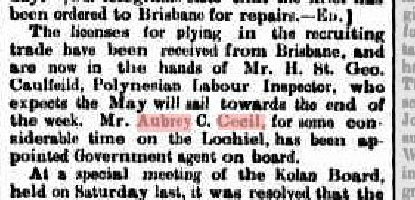
19th May 1882 “The licenses for plying in the recruiting trade have been received from Brisbane, and are now in the hands of Mr. H. St. Geo. Caulfeild, Polynesian Labour Inspector, who expects the May will sail towards the end of the week. Mr. Aubrey C. Cecil, for some considerable time on the Lochiel, has been appointed Government agent on board.”
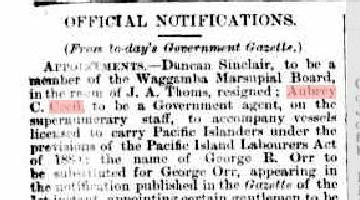
29th July 1882
“Aubrey C Cecil to be a Government agent, on the supernumerary staff, to accompany vessels licensed to carry Pacific Islanders under the provisions of the Pacific Island Labourers Act of 1880.”
A further news item notes the following:
4th December 1882
“Mr Aubrey Cecil, Government agent of the Chance, who most kindly hastened to render all the aid in his power to the shipwrecked ‘Jabberwock’.”
In 1887 Aubrey and Elizabeth had another son, Vernon Digby Cooper Cecil, who sadly was only one when he died.
Aubrey was away at sea often, so it is likely that the boys didn’t see a lot of their father growing up.
The Cecil family home was at 75 Milne Street, Clayfield, Albion, Brisbane, Australia.
Clayfield has always had a reputation as an exclusive Brisbane Suburb and has not diminished with the newer development. Many of the older more substantial homes have fortunately survived.
A detailed story on the history of the Clayfield area where they lived was documented by an old resident whose family moved there in late 1899. To give you an idea of the environment the family lived in on land, I have included excerpts in this story …
… The main arterial roads such as Breakfast Creek Road, New Sandgate Road, Old Sandgate Road (now Bonney Avenue – so named to commemorate the memory of Flores Bonney, who gained considerable fame as an aviatrix) had some semblance of being formed, but the subsidiary roads were more or less reservations, 66 feet wide and with a plough furrow down each side to act as a gutter and water table – the centre was more or less of the old three track style now very rarely seen, even in the country, the two outside tracks made by the vehicle wheels and the centre track made by the horse.
These roads were naturally very dusty and so an occasional water cart was used in an endeavour to abate this nuisance. One seldom travelled on any road in any type of vehicle without a dust coat.
… The Clayfield area was close enough to be able to enjoy the Brisbane River and in addition was served by two main waterways, Breakfast Creek and Kedron Brook. The former, however, apart from the boat anchorage was of little value, but Kedron Brook rising in the back hills of The Gap, flowed into Schultz’s Canal, The Serpentine and so on into Moreton Bay.
… Almost everybody had a horse drawn vehicle of some sort as in those days most houses had room to run horses and most conveyances were drawn by a single animal, although occasionally in town one saw pairs, but very seldom tandem.
… The main industry really on the outskirts of Clayfield was the Pottery on the western side of Lapraik Street and almost down to Crosby Road. This works turned out pots of all descriptions plus agricultural pipes and bricks. Two sawmills were
Thursday 24 February 1887 from The Argus,
THE NEW HEBRIDES
The Government agent of the labour schooner Helena, now at Bundaberg, Queens-land, Mr. Aubrey C. Cecil, has addressed the following letter to the assistant immigration agent there:-“During the voyage of the Helena the following intelligence was given to, and the facts ascertained by, me relative to the movements of the French in the New Hebrides, which I trust you will communicate to the Chief Secretary. When in Port Sandwich on the 9th December the French officers told me that they were about to erect forts for the protection of the port, one at the North Head, one at the end of the harbour facing the entrance, and one near the company’s store; and also that the number of soldiers was to be increased to 220, and that new barracks were to be built. Whilst in Uraparapara, on the 8th January, the natives reported that a French warship had been there, and had pegged off land near the entrance to the harbour on both sides of the heads, on which it was said that they intended to erect small batteries. Whilst at Point Olroy, or Espiritu Santo, the French despatch vessel Guichen came to the anchorage, and landed a white missionary priest. I boarded her, and was told by the commander that they had within three days prior landed three other priests, two at Mate, in Villa Harbour, Sandwich, and one on private properly at Proctor’s Bay, which has been or will be bought by the Wesleyan missionary body.”
(special note …. Article later published in 1937, as below)
Three weeks ago Mr Aubrey Cecil, Government Agent on the labour schooner Helena, reported to the Government of this colony that the French were preparing to occupy the islands in the New Hebrides Group of which they at present hold possession, and that they intended to increase the number of troops there. The report was cabled to the Home Government through the Agent-General in London. The British Government promptly made representations to the French Government and asked for confirmation or denial of the report. The French Government denied the correctness of the report, but whether the denial was or was not qualified in any way cannot be judged from the information received by cable.
13th July 1889
“Mr. Aubrey Cecil, Government agent on board the Brigantine Hector, which has just returned from the South Sea Islands, has, at the request of the Under Secretary for Agriculture, presented to that department a number of plantain, yam, taro, and other plants obtained by him at the South Sea Islands. These will be despatched today for propagation at the Mackay State Nursery.”
21st May 1892 reported in The Queenslander, “The schooner May will probably sail in a few days on a recruiting trip to the South Seas. Mr. Cecil goes as Government agent.”
22nd March 1893 reported in South Australian Register, “The South Seas Hurricane, Brisbane, March 21st The barque Empreza, whose loss in the recent hurricane in the South Seas was reported, left Brisbane on January 11th with Captain Malcom in command, and Mr. A. C. Cecil, Government Agent, who took 153 return islanders for the New Hebrides.”
Aubrey Cooper Cecil died 22nd January 1900 and was buried at sea, he was only 52 years old. On his death certificate it says he as buried at Lat 105. S Long 161.13 E, near the Santa Cruz Islands north of Australia.
The Brisbane Courier
Friday 9th February 1900
“The reported death of Mr. A. C. Cecil at sea has caused a painful shock to his very wide circle of friends. The Coquette returned to port on Tuesday, and reported the demise of the Government agent as having occurred on the 22nd January. The deceased gentleman was the senior Government Agent on the staff, and was first appointed to the service in July, 1882. He bore a very high reputation, and was always regarded as one of the most valued and efficient Government agents, and his unexpected death has caused much regret, for although Mr. Cecil had not been in good health for some time prior to embarking on his last voyage, there was no reason to suspect that the end was so near.”
After her husband’s death, Elizabeth Cecil continued to live in Australia until about 1912 when she moved to New Zealand, to be with her son Egerton.
